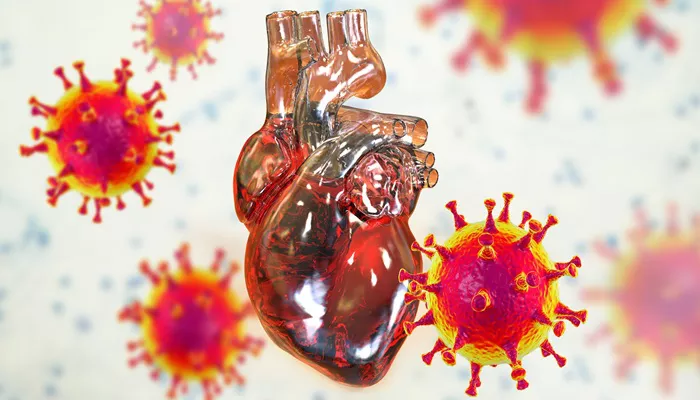Myocarditis is an inflammation of the heart muscle that can lead to significant complications, including heart failure, arrhythmias, and sudden cardiac death. As a cardiologist, it is crucial to have a thorough understanding of the various diagnostic tools available to detect myocarditis accurately. This article will provide a comprehensive overview of the steps involved in checking for myocarditis, from initial clinical assessment to advanced imaging techniques.
How Do You Check for Myocarditis?
1. Clinical History and Physical Examination
The first step in diagnosing myocarditis is to obtain a detailed clinical history and perform a thorough physical examination. Patients with myocarditis may present with a variety of symptoms, including chest pain, fatigue, shortness of breath, fever, and signs of heart failure, such as swelling in the legs or abdomen. It is essential to inquire about any recent viral illnesses, exposure to toxins or medications, or underlying autoimmune disorders, as these factors can contribute to the development of myocarditis.
During the physical examination, the healthcare provider will assess vital signs, such as heart rate and blood pressure, and listen to the heart and lungs for any abnormal sounds or murmurs. They may also check for signs of fluid buildup in the body, such as swelling in the legs or abdomen.
2. Electrocardiogram (ECG)
An electrocardiogram (ECG) is a non-invasive test that measures the electrical activity of the heart. It is often one of the first tests performed when myocarditis is suspected. Patients with myocarditis may show various ECG abnormalities, such as:
ST-segment elevation or depression
T-wave inversions
Arrhythmias, such as atrial fibrillation or ventricular tachycardia
Conduction delays, such as atrioventricular (AV) block
While ECG findings are not specific for myocarditis, they can provide valuable information about the extent and severity of the inflammation.
SEE ALSO: Where Is Myocarditis Pain Located
3. Cardiac Biomarkers
Cardiac biomarkers, such as troponin and creatine kinase-MB (CK-MB), are proteins released into the bloodstream when the heart muscle is damaged. Elevated levels of these biomarkers are often seen in patients with myocarditis. However, it is important to note that cardiac biomarkers are not specific for myocarditis and can be elevated in other conditions, such as acute coronary syndrome or myocardial infarction.
4. Echocardiography
Echocardiography is a non-invasive imaging technique that uses sound waves to create images of the heart. It is often used to assess the structure and function of the heart in patients with suspected myocarditis. Echocardiographic findings in myocarditis may include:
Ventricular wall motion abnormalities
Ventricular dilation or hypertrophy
Reduced ejection fraction (a measure of the heart’s pumping ability)
Pericardial effusion (fluid around the heart)
While echocardiography can provide valuable information about the extent of myocardial damage, it is not specific for myocarditis and may not detect early or focal forms of the disease.
5. Cardiac Magnetic Resonance Imaging (CMR)
Cardiac magnetic resonance imaging (CMR) is a non-invasive imaging technique that uses strong magnetic fields and radio waves to create detailed images of the heart. It is considered one of the most sensitive and specific tests for diagnosing myocarditis. CMR findings in myocarditis may include:
Increased signal intensity on T2-weighted images, indicating myocardial edema
Early gadolinium enhancement, indicating increased perfusion
Late gadolinium enhancement, indicating myocardial fibrosis or scarring
CMR can also help differentiate myocarditis from other conditions, such as acute coronary syndrome or hypertrophic cardiomyopathy.
6. Endomyocardial Biopsy
Endomyocardial biopsy is an invasive procedure in which a small piece of heart tissue is removed and examined under a microscope. It is considered the gold standard for diagnosing myocarditis. Biopsy findings in myocarditis may include:
Inflammatory infiltrates
Myocyte necrosis
Interstitial edema
While endomyocardial biopsy can provide a definitive diagnosis of myocarditis, it is not routinely performed due to the risk of complications, such as bleeding, arrhythmias, or perforation of the heart. It is typically reserved for patients with severe or rapidly progressive symptoms, or when other diagnostic tests are inconclusive.
Identifying The Cause
Once myocarditis is diagnosed, it is essential to determine the underlying cause. This may involve additional tests, such as:
Blood tests for viral antibodies or autoimmune markers
Screening for infectious agents, such as HIV or Lyme disease
Evaluation for exposure to toxins or medications
Screening for underlying autoimmune disorders
Identifying the cause of myocarditis is crucial for guiding treatment and preventing further complications.
Conclusion
Diagnosing myocarditis requires a comprehensive approach that combines clinical history, physical examination, and various diagnostic tests. While no single test is definitive, the combination of ECG, cardiac biomarkers, echocardiography, CMR, and, in some cases, endomyocardial biopsy can help establish the diagnosis and guide treatment.

